
The important figures of e-commerce in Europe in 2021
Researchers from the Center for Market Insights at the University of Applied Sciences in Amsterdam have just published a study. That takes stock of e-commerce in Europe for the years 2020 and 2021. The findings are clear: companies and consumers are in a digitalization dynamic.
This report and article show how important e-commerce has been for society and the economy in different European countries in the midst of the Covid-19 pandemic.
European e-commerce figures on the rise
2020 was an exceptional year. Marked by the COVID-19 pandemic, and e-commerce played an important role for society and the economy in different countries.
Across Europe, e-commerce turnover was €757 billion, up 10% in 2019. COVID-19 has strongly boosted product sales. But the sharp drop in sales in the tourism and services sector (events, tickets, etc.) has helped to slow down the sector’s overall growth.
European e-shoppers
The report published by Fevad (Fédération du e-commerce et de la vente à distance) reveals the ranking of countries where people consume the most on the Internet. In first place is the United Kingdom with 92% of consumers online. France is only in 13th position, behind Germany, Denmark, and Norway, with “only” 78% of consumers online.
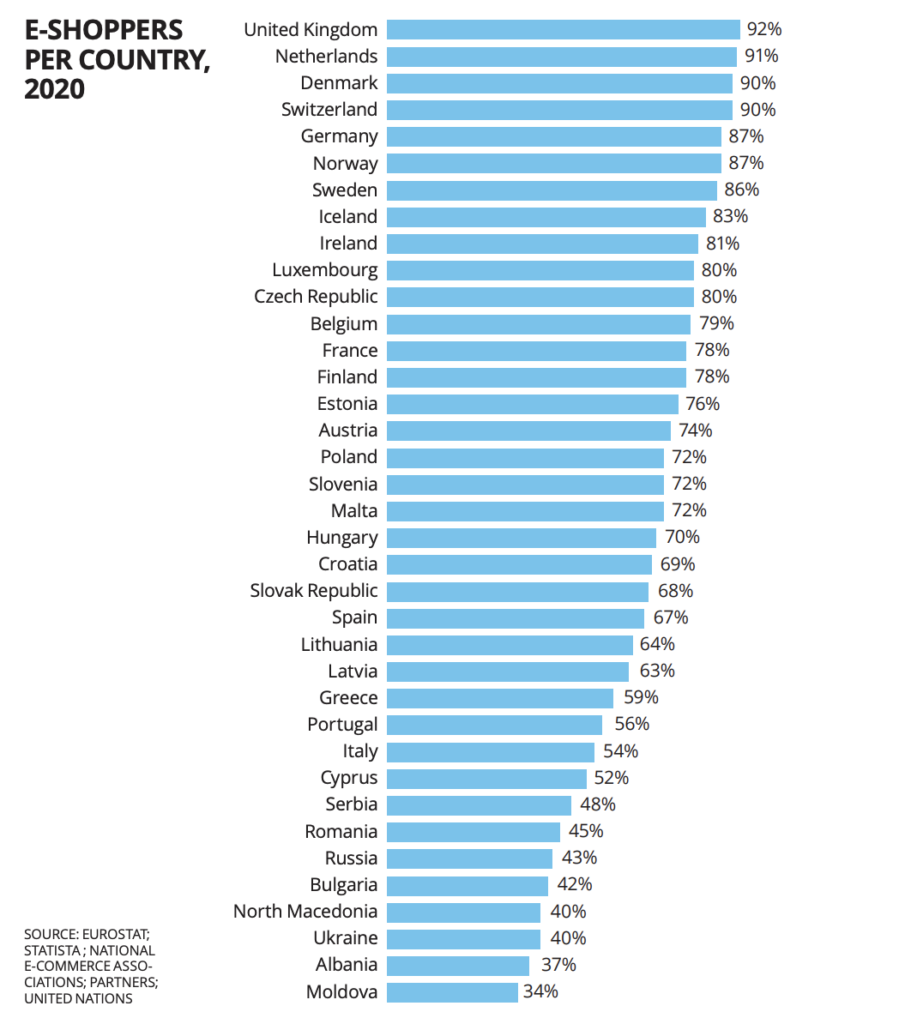
Western Europe driving the growth of e-commerce
According to the results of the study, it is the countries of Western Europe that are driving the growth of e-commerce. They alone account for 64% of the B2C turnover. Just behind them is Southern Europe with 16%, then Central Europe with 8% and finally Northern Europe with 6% and Eastern Europe with 6% too. Three countries come out on top in terms of turnover: unsurprisingly the United Kingdom with 236 billion euros. France is in second place with €112 billion, and Germany is third with €93.6 billion.
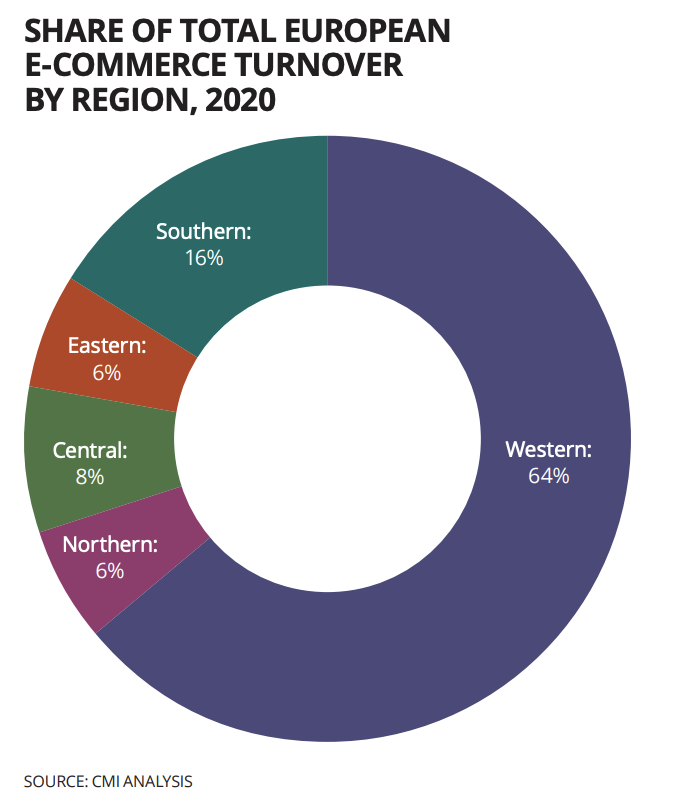
Growth of internet users
An interesting finding of the Center for Market Insights researchers is that internet usage is constantly increasing in Europe. In 2017 it was estimated that 83% of Europeans had access to the Internet. In 2021, that number will be 91%. On a global level, the number of online consumers also increased exceptionally between 2019 and 2020 (from 68% to 73%) and even continued to increase between 2020 and 2021 (from 73% to 75%).
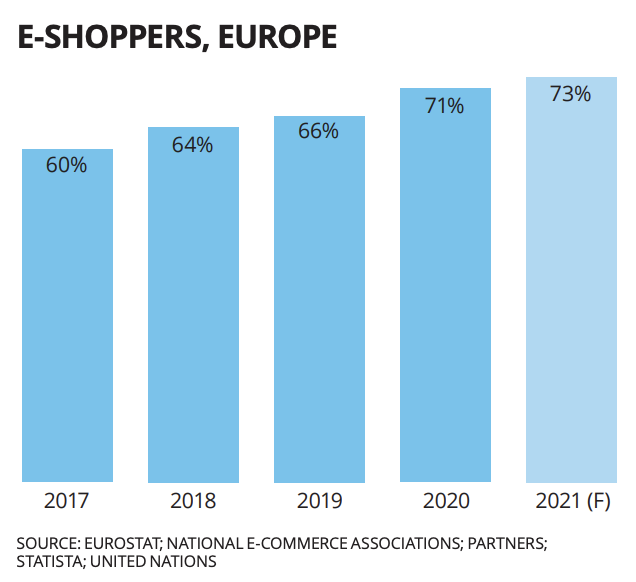
A transformation of our societies
It is a fact that the last year has triggered many changes in our societies and economies. To respond to the rapidly changing business reality, companies have had to accelerate their digital transformation and focus on e-commerce. Companies that previously only operated via offline sales channels have now started to develop a digital presence. Ecommerce Europe believes that the trend towards an increasingly omnichannel retail sector was inevitable, but that the pandemic has accelerated this evolution.
The role of social networks
The study also gives some details on the role that social networks play in this transformation. It states that 93% of e-commerce sites display their social networks on their website. Among all online shops in the EU, Facebook, Instagram, and YouTube are the most popular channels. Twitter is probably more popular in Western Europe (71% posting) than in Northern Europe (24% posting). 93% of e-tailers use Facebook to promote their products. It is still the strongest network in e-commerce.
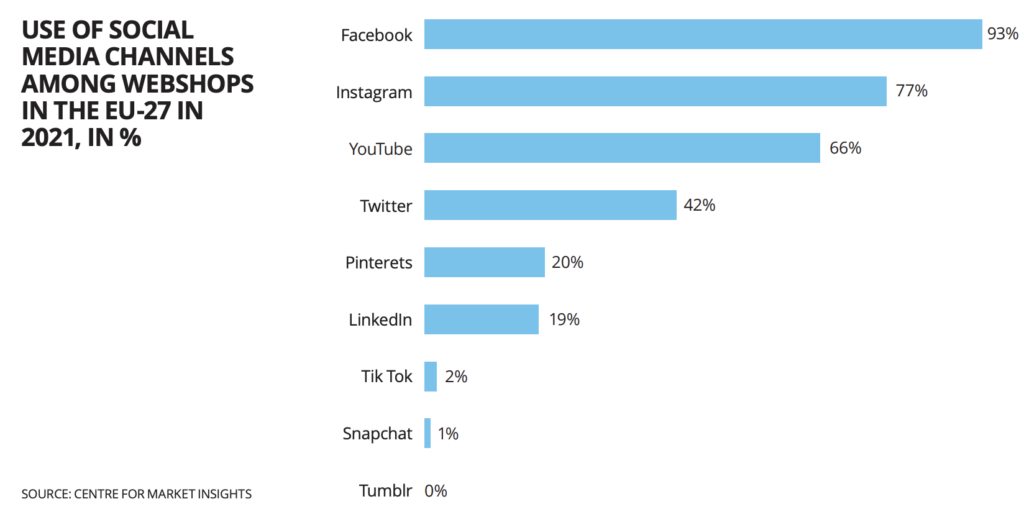
Delivery options and time
Over the past decade, the number of delivery options offered by online stores has steadily increased, especially in Europe. In addition to door-to-door delivery, 61% of e-shops in EU 27 countries already offer the possibility of picking up at their stores/outlets. And 56% of e-shops now offer the option to ship orders to the pick-up point of a logistics service provider. The use of pick-up points is the highest among online stores with more than 2 million visits per year (89%). Followed by those with 5 to 200 million visits (76%), and those with less than 500,000 visits. Lowest usage rate in the store (27%).
E-commerce in Europe : retail industry
Focusing on the retail industry, the results show that among the electronic stores selling fashion, footwear, and accessories, the option of collecting online orders in the store/outlet is the lowest (37%). The highest in the store. Accessories, as well as books, music, movies, and video games (all 76%). Online stores that sell general merchandise are most likely to provide pick-up points as a delivery method. While online stores that sell groceries, (alcohol) beverages, and pet supplies are the least likely to do so. The results further show that the utilization rate of pickup points is the highest among e-shops targeting Northern Europe (73%). And the lowest (36%) among e-shops focusing on Southern Europe.
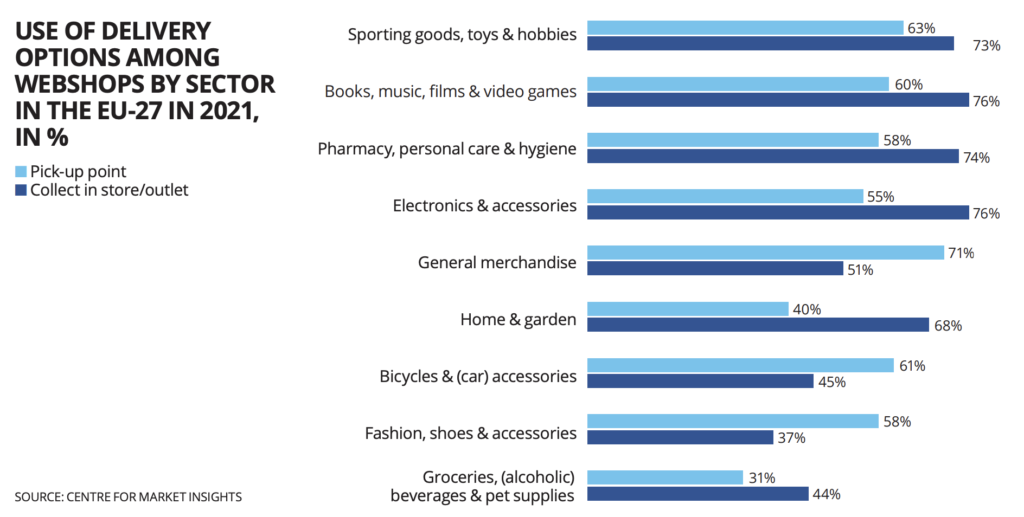
E-commerce in Europe : delivery times
Regarding the delivery time and the option of selecting the delivery date/time, the results show that most online stores (68%) in the 27 EU countries do not provide next-day delivery services to their customers. And the percentage of online stores that provide next-day delivery services on weekends, Same day or customized delivery times is shorter. However, there are big differences between regions and types of online stores. For example, in Western Europe, the share of e-shops offering customized delivery time (31%), next-day delivery (45%), and weekend delivery (35%) are much higher than in other European regions.
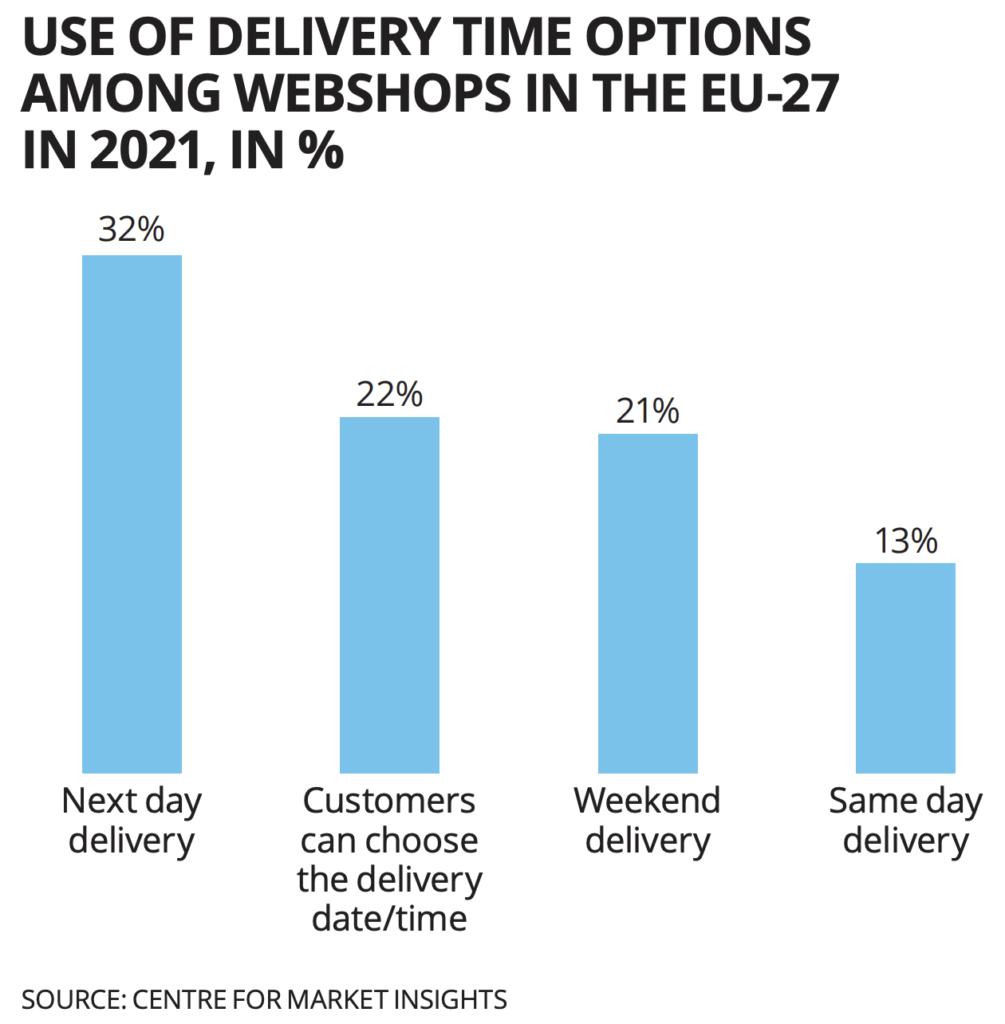
Finally
You will have understood that e-commerce in Europe has experienced a real boom in 2020 and 2021 and this is only the beginning! It is important to pay attention to the figures for each year to be able to follow the evolutions and see the points you can improve. You can find the full report here. The report includes detailed figures for the European countries but also more specific data on each country.
If you would like to discuss these figures or if you liked the article, please leave a comment or contact us. We would be delighted to discuss the report with you.
Are you interested in e-commerce in Europe? Want to know more about it? Have a look at the articles in this category, you might like them.